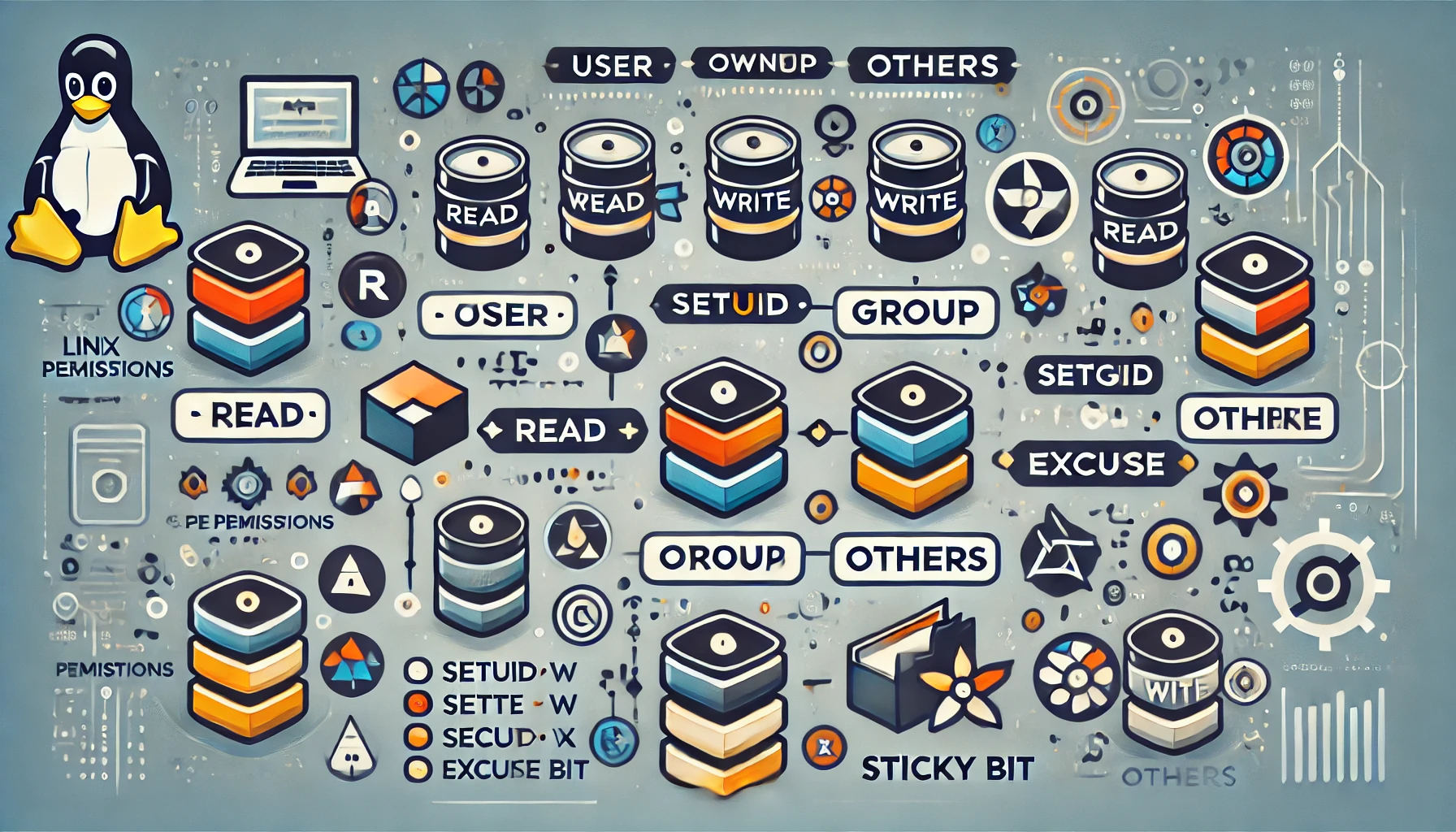"Linux Day 6- Permission, System ka Sultan!"
 Shreyash Myakal
Shreyash Myakal
Just like we need permission to enter a restricted area or perform specific tasks in real life. Same in linux File permissions are a crucial aspect of Linux security and access control. Understanding and managing permissions correctly ensures that files and directories are only accessible to authorized users. This guide covers different types of permissions, how to modify them, and special permission bits like setuid, setgid, and the sticky bit.
Categories of File Permissions
In Linux, file permissions are categorized into three groups:
User (u) - The owner of the file.
Group (g) - A group of users with shared permissions.
Others (o) - All other users on the system.
Understanding File Permission Representation
To view file permissions, use the ls -l command. It displays output like:
-rw-r--r-- 1 user group 1234 Feb 28 10:00 example.t
The first column represents the file type and permissions. It is structured as:
type | owner | group | others
-| rw- | r-- | r--
File Types
-: Regular filed: Directoryb: Block device filec: Character device filel: Symbolic links: Socket
Permission Types
Each category (user, group, others) has three types of permissions:
r (read) – Allows reading the file contents.
w (write) – Allows modifying the file.
x (execute) – Allows executing the file if it is a script or program.
Changing File Permissions
Permissions can be changed using the chmod command in two ways: symbolic and numeric.
Symbolic Method
The symbolic method allows modifying permissions using letters:
chmod u+x filename # Give execute permission to the user
chmod g-w filename # Remove write permission from the group
chmod o=r filename # Set others' permission to read-only
chmod a+x filename # Give execute permission to all
Numeric Method
Each permission has a corresponding numeric value:
Read (r) = 4
Write (w) = 2
Execute (x) = 1
To set permissions, sum the values for each category:
chmod 755 filename
Breakdown:
User (7) = r (4) + w (2) + x (1) = 7
Group (5) = r (4) + x (1) = 5
Others (5) = r (4) + x (1) = 5
Special Permissions
1. SetUID (set user ID)
When set on an executable file, the process runs with the file owner’s privileges rather than the user executing it.
chmod u+s filename
Denoted as s in the user execute position (-rwsr-xr-x).
2. SetGID (set group ID)
When applied to files, it makes the file execute with the group’s permissions. When applied to directories, new files inherit the group ownership
chmod g+s filename
Denoted as s in the group execute position (-rwxr-sr-x).
3. Sticky Bit
Used on directories to allow only the owner to delete their own files, even if others have write access.
chmod +t directory
Denoted as t at the end (drwxrwxrwt).
In Linux, file permissions are key to security and access control, ensuring files and directories are accessible only to authorized users. Permissions are divided into user, group, and others, each with read, write, and execute types. To view permissions, use "ls -l", and modify them with "chmod" in symbolic or numeric ways. Special permissions, like SetUID, SetGID, and the sticky bit, provide additional control for executables and directories.
Subscribe to my newsletter
Read articles from Shreyash Myakal directly inside your inbox. Subscribe to the newsletter, and don't miss out.
Written by

Shreyash Myakal
Shreyash Myakal
I’m currently learning Linux, AWS, DevOps, MySQL, and related technologies, aiming to become a Cloud Engineer. Passionate about cloud infrastructure and automation, I’m excited to apply these skills in real-world projects.